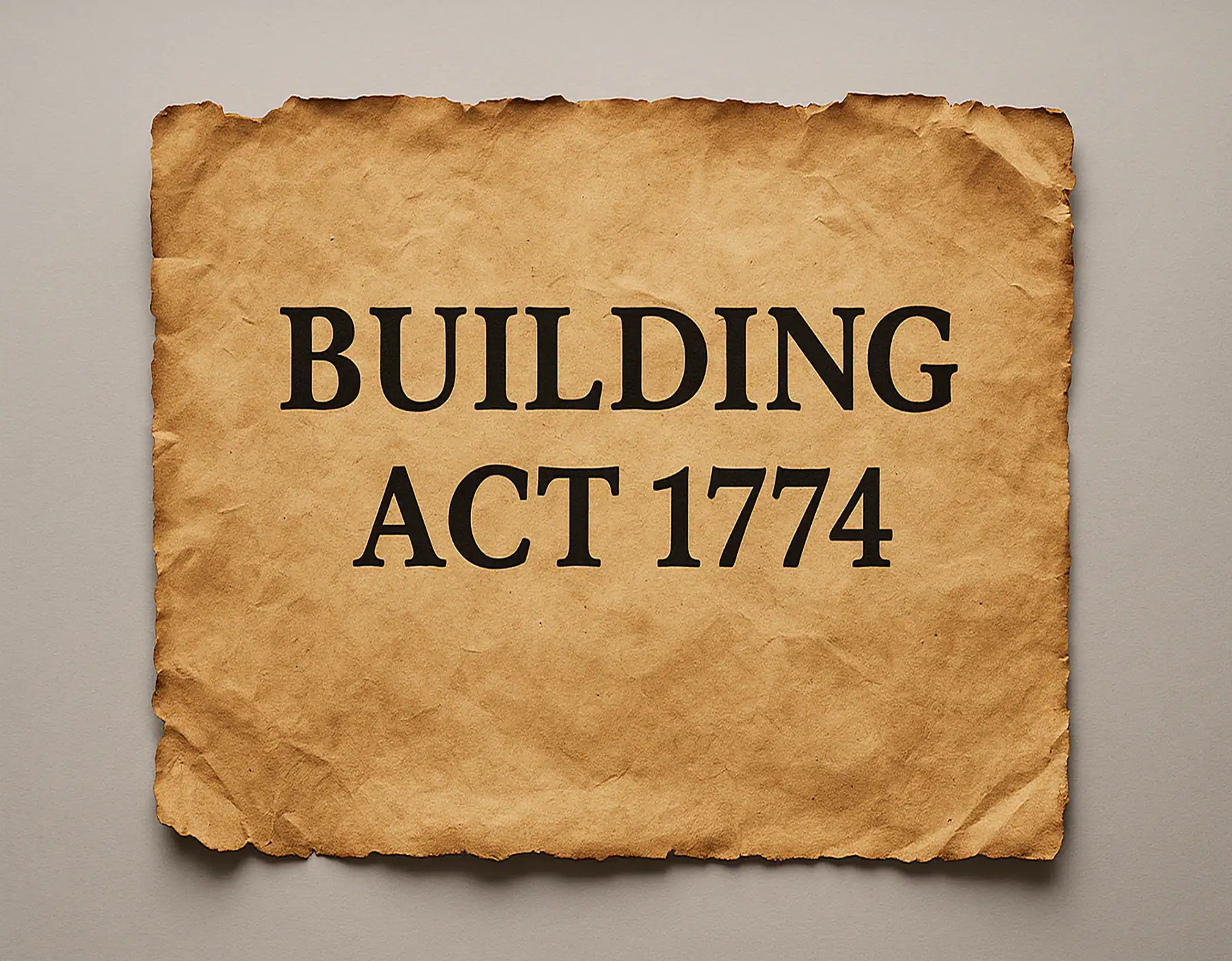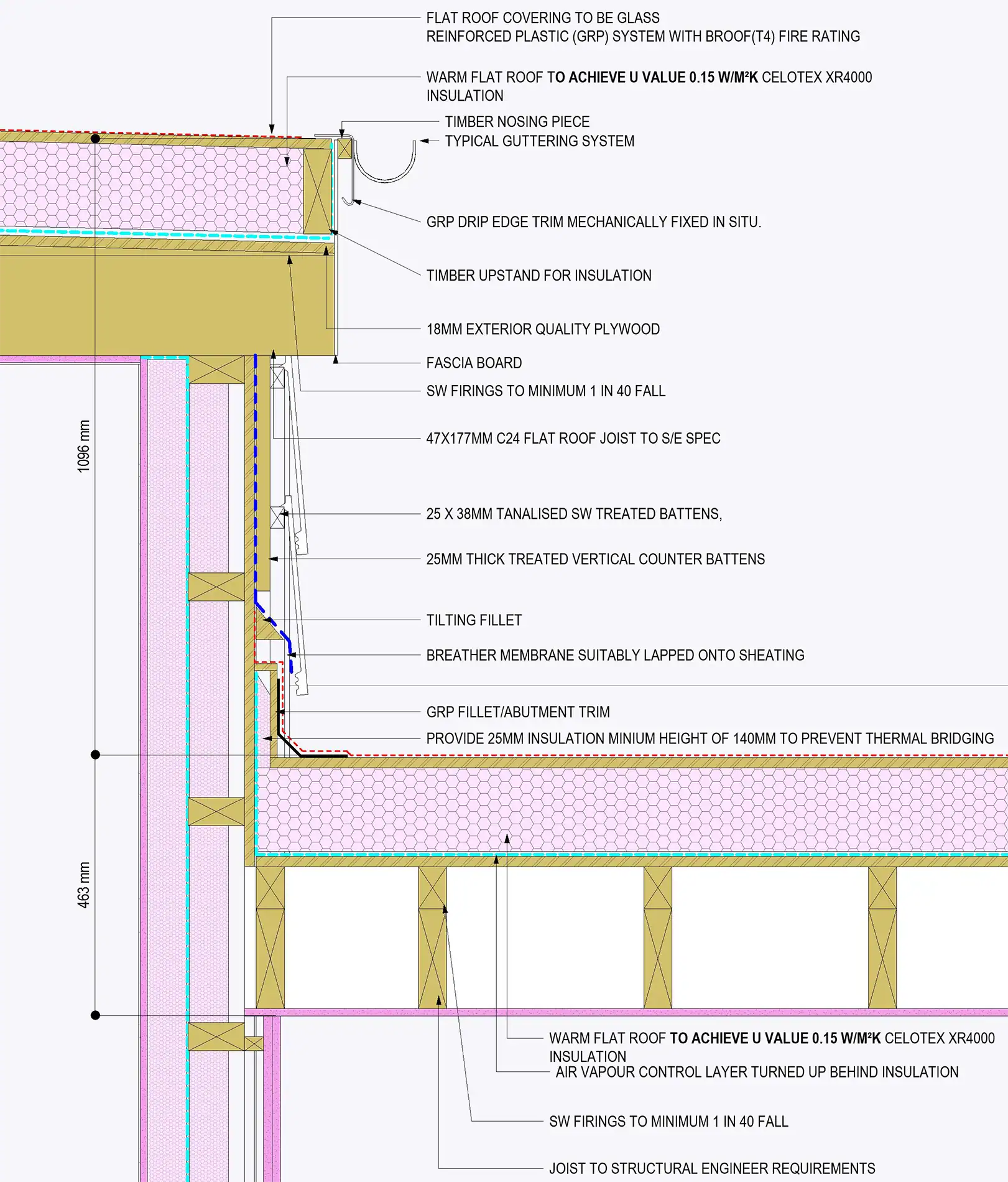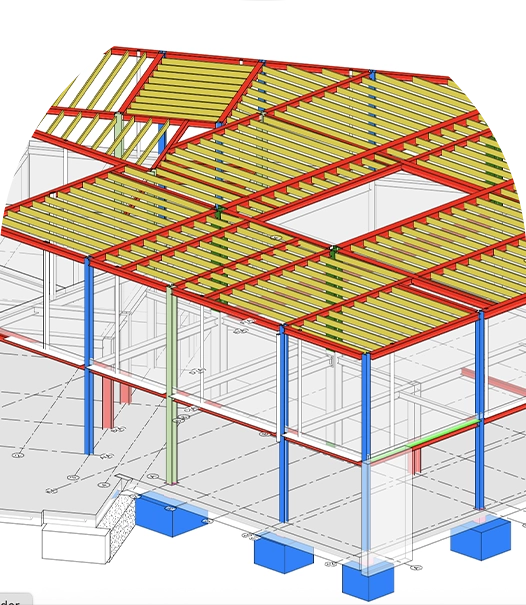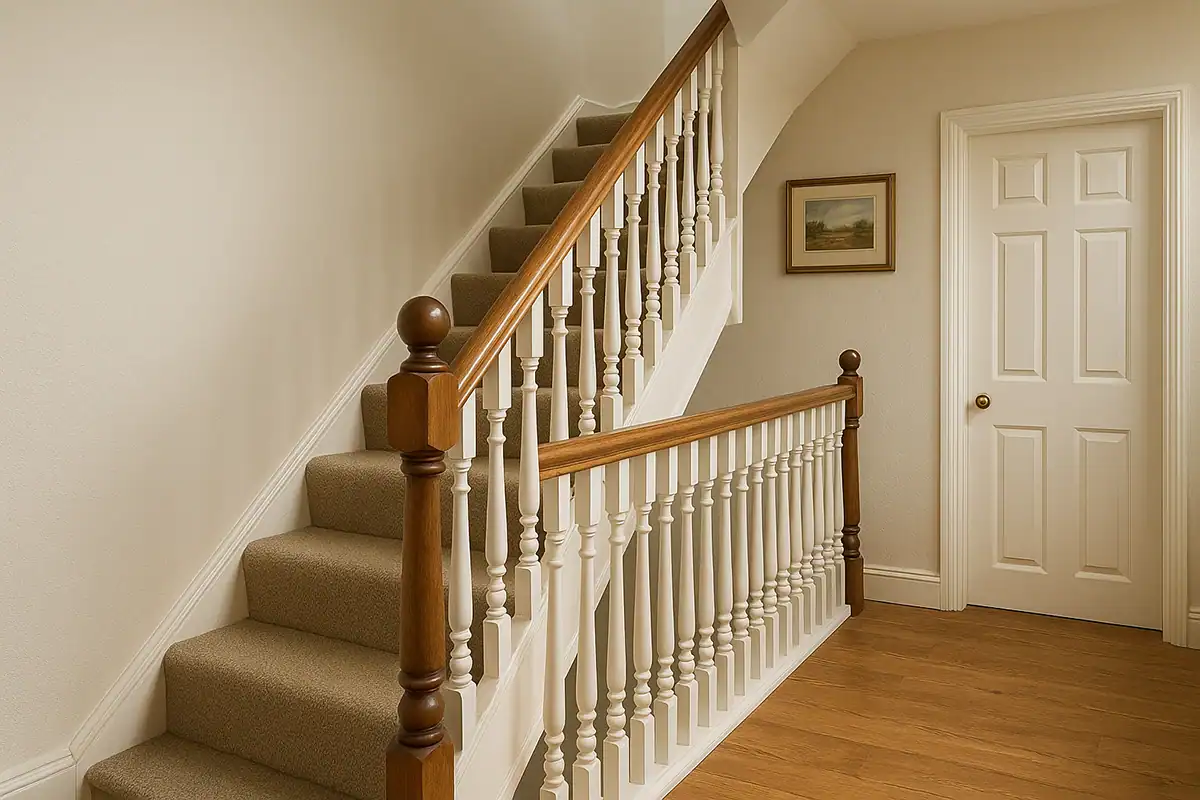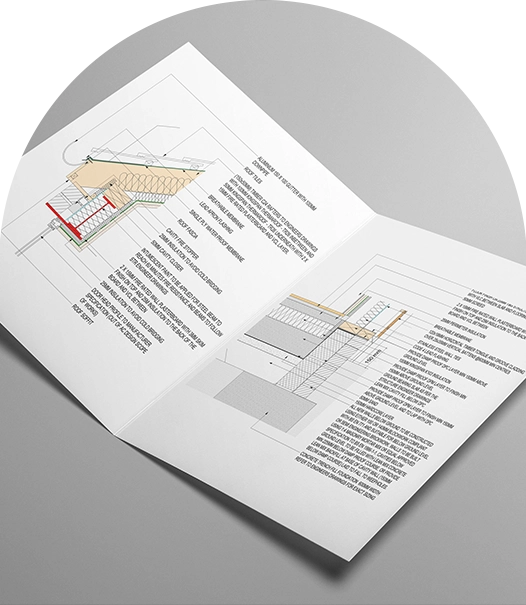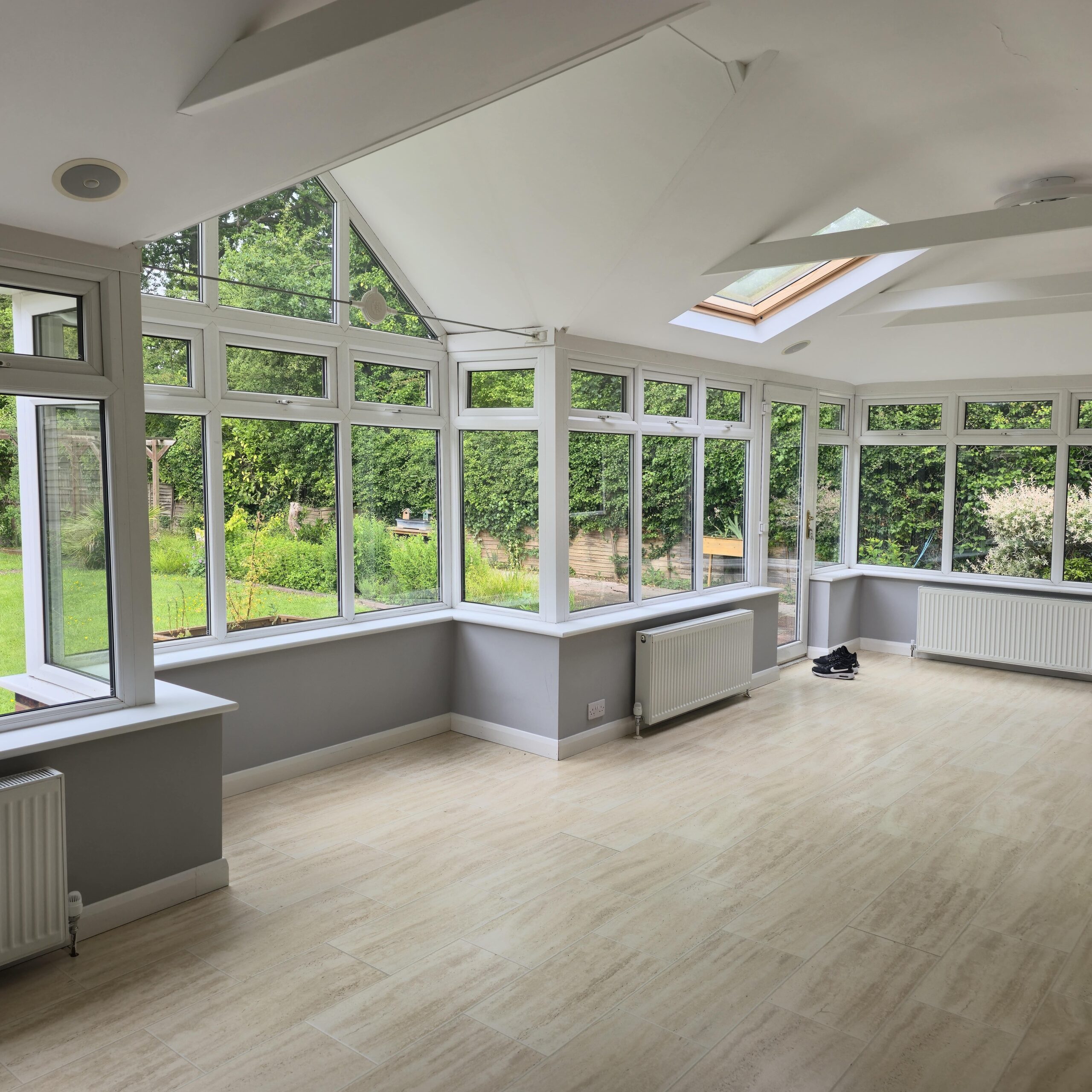Rebuilding of London Act 1666
The fire of London in 1666 was a key moment in British history and building standards. The Great Fire of London in September 1666 destroyed over 13,000 houses and 87 churches. It covered 436 acres of the City of London. This fire showed the dangers of uncontrolled building. Parliament responded by passing the Rebuilding of London Act in 1667. This Act set up the first complete building regulation system in England.
This important law brought in several key principles. These principles remain basic to building control today. The Act required that all new building construction must be built in brick or stone. Timber and thatched roofs were banned, greatly reducing fire risk. The Act also set standard building heights and street widths for different types of streets, creating a more organized city layout. Buildings had to be at least four inches from the front of next-door structures, helping prevent fire spread.
The 1666 Act changed things from local arrangements with masons and carpenters to systematic, legally binding building standards. It showed that good building control needed more than just regulations on paper. It also needed proper enforcement and qualified professionals to oversee compliance. This created the power for official inspection and enforcement, appointing surveyors to make sure buildings complied with the regulations.
The 1770s
The 1770s saw building regulation grow beyond London’s boundaries. This marked the end of the middle ages approach to unregulated construction. The success of the Rebuilding of London Act had shown the value of systematic building control. Other major cities began putting in place similar measures. During this period, building regulations started to address more than just fire safety. They also covered structural integrity and public health concerns.
The Building Act 1774, also known as the London Building Act, improved and expanded the 1666 law. This Act brought in more detailed specifications for wall thicknesses, foundation requirements, and chimney construction. It also set up a more advanced system of building classification with different requirements for houses of different sizes and purposes. The Act created the foundation for modern building control by setting the principle that buildings must meet minimum safety standards before they can be occupied.
Provincial cities began adopting similar regulations during this period, often adapting London’s model to local conditions and materials. This marked the beginning of a nationwide approach to building control. However, implementation remained inconsistent across different regions. The period from 1212 onwards had seen various local attempts at building control, but the 1770s represented the first systematic national expansion of regulatory frameworks in England.
The 19th Century
The 19th century brought rapid city growth and industrialization in Victorian England. This created new challenges for building control. The massive population growth in industrial cities led to overcrowded, poorly built residential buildings that posed serious health and safety risks. Poor sanitation, bad ventilation, and poor construction contributed to frequent outbreaks of cholera, typhoid, and other diseases.
During this period, building regulations began to include public health considerations alongside structural and fire safety requirements. The concept of minimum space standards emerged, specifying minimum room sizes, ceiling heights, and window areas to ensure adequate light and ventilation. The industrial revolution also brought new building materials and construction techniques, requiring regulators to develop expertise in iron and steel construction.
Local government gained increasing powers to enforce building standards. However, the system remained fragmented with significant variations between towns and cities. This period also saw the emergence of professional building inspectors and standardized testing methods for building materials. The width of wall specifications and number of storeys regulations became more advanced during this era.
The Public Health Act 1875
The Public Health Act 1875 represents a watershed moment in building regulation history. This law set up a unified framework for public health and building control across England and Wales. The Act was driven by growing recognition that poor housing conditions were a major public health threat. It recognized that good building control was essential for preventing disease and promoting community wellbeing.
The 1875 Act brought in several revolutionary concepts that remain central to building control today. It established mandatory building byelaws that local government authorities were required to adopt and enforce. These byelaws covered construction standards, drainage requirements, and space standards for all buildings. The Act also introduced the requirement for building plans to be submitted and approved before construction could begin — creating the foundation of the modern building regulations approval process.
Perhaps most significantly, the Act established the principle that building control was not just about individual building safety but also about protecting public health and welfare. This broader perspective led to regulations covering sewerage, water supply, and waste disposal. It recognized that buildings must be considered as part of larger city systems. The Act also addressed new street developments and established minimum standards for building work. This legislation built upon earlier measures, including provisions that had been developing since the 1850s. It created a comprehensive regulatory framework.
Building Regulations
The modern building regulations system emerged gradually through the 20th century, culminating in the current framework established by the Building Act 1984. This system replaced the previous patchwork of local byelaws with nationally standardized regulations for England and Wales. The first set of national building standards was published in 1963 and came into force in 1964, establishing uniform requirements across the country.
The Building Regulations 2010 represent the current set of regulations that apply to England and Wales. Northern Ireland has its own separate system. Rather than prescribing specific construction methods, the regulations set performance standards that buildings must achieve. This approach allows for innovation in construction techniques while maintaining essential safety and quality standards.
The regulations cover a wide range of areas, including structural safety — governed under Building Regulations Part A — fire safety, insulation and energy efficiency, ventilation, drainage, and accessibility. They are regularly updated to reflect new technologies, changing social needs, and evolving understanding of building performance. Recent updates have placed increasing emphasis on energy efficiency and environmental sustainability, reflecting growing concerns about climate change and resource conservation.
Today’s building control system requires clear technical documentation. Understanding the difference between structural engineer drawings and building regulation drawings is crucial for any construction project.
Set of Building Regulations
The complete set of building regulation drawings forms the backbone of construction safety and quality standards. These regulations are structured around functional requirements that specify what buildings must achieve. They do not prescribe exact construction methods. This performance-based approach allows for innovation while ensuring consistent safety standards across all projects.
Regulations for England and Wales
The regulations for England and Wales provide a unified framework ensuring consistent building standards across both countries. This harmonized approach facilitates construction industry operations and ensures that safety and quality standards are maintained regardless of location within the regulatory area.
Ventilation
Ventilation requirements form a critical component of building regulations. They ensure adequate air quality and prevent moisture-related problems. The regulations specify minimum ventilation rates for different types of spaces and require proper design of ventilation systems to maintain healthy indoor environments.
The Current System
Today’s building control system in England and Wales works through a dual approach involving both local authority building control departments and approved inspectors from the private sector. This system gives choice to building owners while maintaining consistent standards nationwide. Northern Ireland operates under separate building regulations run by district councils.
The current system is based on the principle of functional regulation — the Building Regulations specify what buildings must achieve, not how they must be built. This approach encourages innovation and ensures that all buildings meet minimum standards for safety, health, welfare, convenience, and energy efficiency. The system recognizes that building work needs proper oversight throughout construction, particularly at points affecting public safety.
Building control bodies have extensive powers to ensure compliance. They can inspect buildings during construction, require testing of materials and systems, and take enforcement action against non-compliant work. The system also includes provisions for appeals and dispute resolution, ensuring that regulatory decisions can be challenged when necessary.
Recent developments have focused on improving the competence of building control professionals and strengthening enforcement powers. Following the Building Safety Act 2022, the Building Safety Regulator was introduced to enhance oversight — particularly for high-risk buildings. These reforms followed the Grenfell Tower tragedy, which highlighted critical failures in the previous regulatory framework.
England and Wales
The building control system for England and Wales operates under a unified regulatory framework. This ensures consistent standards across both countries and facilitates cross-border construction projects.
Building Work
All building work must comply with the applicable building regulations, including new construction, alterations, or extensions. The scope of regulated building work is comprehensive, covering structural changes, installation of new systems, and modifications that affect building safety or performance. Even altering a staircase requires building regulations approval.
Council
Local council building control departments play a crucial role in the regulatory system. They provide statutory building control services and ensure compliance with building regulations. Councils work alongside approved inspectors to maintain consistent standards across all construction projects.
Comply with the Regulations
To comply with the regulations, building owners and contractors must ensure that all work meets the functional requirements set out in the building regulations. This involves proper planning, submission of required documentation, and cooperation with building control inspectors throughout the construction process.
Designing Buildings Anywhere
Resources such as Designing Buildings Anywhere provide valuable guidance for construction professionals. They help navigate the complex regulatory landscape, offering technical information and best practice guidance to ensure compliance with building regulations.
History of Building Regulations
The history of building regulations shows the evolution from basic fire safety measures to comprehensive systems addressing all aspects of building performance. This historical perspective helps understand current regulatory requirements and anticipate future developments in building control.
Building Regulations Approval
Building regulations approval is essential for most construction projects. It ensures that proposed work meets all relevant safety and performance standards. The approval process involves submission of detailed plans and specifications, followed by inspections during construction to verify compliance.
Building Regulations FAQs
Who is responsible for following building regulations?
The responsibility for following building regulations falls primarily on the person carrying out the building work — typically the building owner or their appointed contractor. However, multiple parties have specific responsibilities within the system to ensure compliance.
Building owners are ultimately responsible for ensuring that any building work complies with the regulations for England and Wales. This is true even if they employ contractors. They must ensure that proper applications are made to the council or approved inspectors before work begins and that all required inspections are arranged during construction.
Contractors and tradespeople have a professional duty to carry out building work in accordance with the regulations, follow any conditions imposed by building control, and cooperate with inspectors. This applies to all aspects of construction, from doors and windows installation to structural work.
Architects and designers must ensure their designs comply with the regulations. Their drawings and specifications must provide sufficient information for building regulations approval and consider regulatory compliance throughout the design process. Resources like Designing Buildings Anywhere help professionals navigate approval procedures.
Building control bodies — whether local authority departments or approved inspectors — are responsible for checking that proposed work complies with the regulations, conducting inspections during construction, and taking enforcement action when necessary.
How long do building regulations take to come through?
The timeframe for building regulations approval depends on the complexity of the building work and the type of application submitted. For most domestic projects, the process typically takes between five and eight weeks from submission to decision.
Full plans applications involve detailed review of construction drawings and specifications, generally taking five weeks for determination by local authorities. This period can extend to eight weeks if additional information is requested or if consultation with other departments is required.
Building notice applications are simpler submissions mainly used for straightforward domestic work. They do not require formal approval but must be submitted at least two days before work begins. Building control will still inspect the work as it progresses, which can affect overall timelines.
For complex commercial or large residential projects involving multiple storeys or innovative techniques, the process may take longer — especially where other agencies (such as fire authorities) are consulted. Pre-application discussions with building control help identify issues early and reduce overall approval times.
The approval process also depends on the quality and completeness of submitted information. Applications with missing details or unclear drawings will take longer to process because building control may need to request clarifications. Planning and building applications often run concurrently, though they are separate processes with different timescales.

